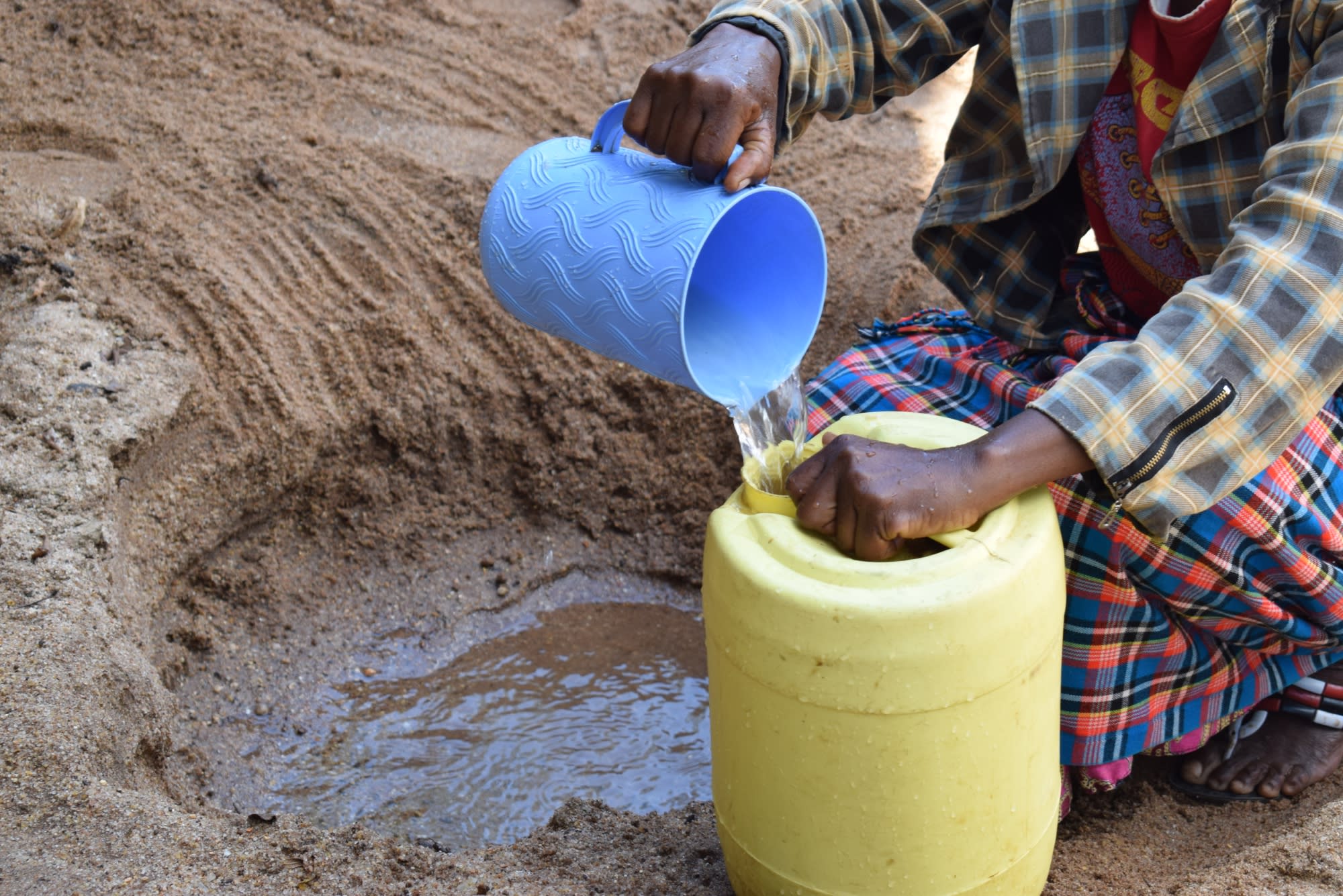There is a complete lack of clean water to sustain the 347 students and staff at Murwana Primary School.
Water brought to school by students is from untrusted sources and not safe for human consumption. Students are required to carry water to school on a daily basis, and this has been burdensome with the long distances involved and has left students feeling tired during school.

They either bring water from home or collect it along the way, but the water most often comes from open scoop holes from the nearest riverbed. This water is muddy and open to contamination. This exposes the students to waterborne diseases - thus increasing the likelihood they fall ill and miss class.
"Asking students to carry water is also not good because they should only be coming to school to learn and concentrate in class," said Headteacher Isaac Kariuki.
In addition, the water source is depended upon by the whole of Murwana Village so it is always crowded with residents. That forces people to wake up early and get water if they want to avoid waiting in line.
The school latrines and classes are rarely cleaned owing to the water situation at the school.
"There is not enough water to maintain good standards of hygiene and sanitation. It exposes the school population to unforeseen dangers," said Mr. Kariuki.
This creates an unfavorable learning environment for young children in pursuit of their dreams.
About the School
Murwana Primary School was started by the Murwana Community in 1969, which initiated the construction of the first classrooms through a public funds drive. The school was later taken up by the government and has been operating under the AIC Church. With no formal sponsors, the school has grown through the support of parents and the government.
The school is found in a peaceful, rural village. Dry conditions experienced in the area have hugely contributed to the low vegetation cover within the locality. Most of the buildings in the surrounding area are made of mud and grass.
Rainwater Catchment Tank
We will build a 104,000-liter rainwater catchment tank for this school. This water will benefit the students, teachers, and supplementary staff. Parents will mobilize the materials needed for construction, such as sand and stone. They will also lend some strong arms to help with the actual construction.
The huge capacity of this tank makes the others look tiny in comparison; 104,000 liters should be enough water to carry students and staff through the entire dry season. As soon as the tank has time to cure, it can begin to collect rainwater for drinking, cooking, and cleaning!
Training
Students and staff will be trained for one day. Those in attendance will form a school health club that will promote good hygiene and sanitation practices both at school and home. They will learn all of the steps to proper handwashing, how to treat water, and how to keep their environment clean. The school will also be taught how to best oversee and maintain their new rainwater catchment tank and handwashing stations.
Handwashing Stations
Three handwashing stations will be delivered at the project’s completion. These are 1,000-liter plastic tanks fitted with four taps. The health club and school management will be responsible for making sure tanks are filled with water and that a cleaning agent such as soap or ash is available.

 Rainwater Catchment
Rainwater Catchment
 Rehabilitation Project
Rehabilitation Project





























